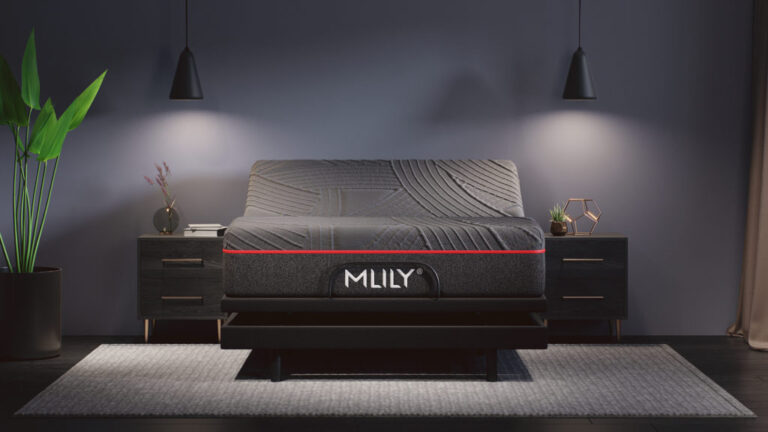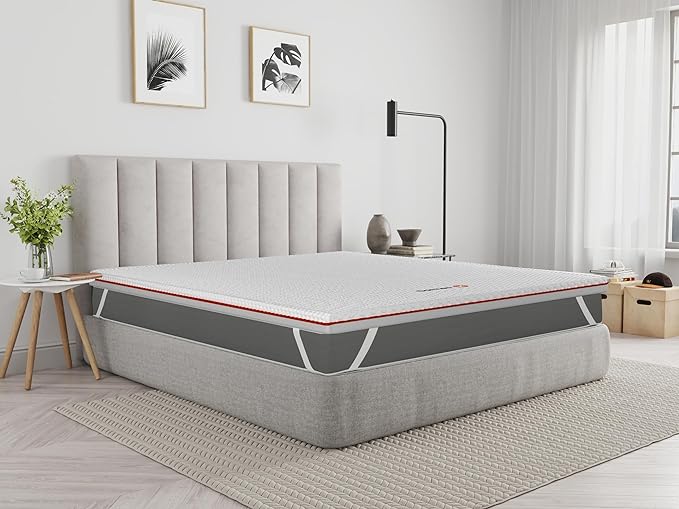Are you struggling with sleep problems and looking for a solution? Look no further! In this comprehensive review, we will explore the benefits of high density foam and its potential to improve your sleep quality. High density foam mattresses offer exceptional support, pressure relief, and motion isolation, ensuring a peaceful and undisturbed sleep throughout the night. Join us as we delve into the world of high density foam and discover if it is the answer to all your sleep woes.
Table of Contents
Benefits of High Density Foam
Improved Support and Pressure Relief
High density foam offers improved support and pressure relief, making it an ideal choice for those with sleep problems. The dense structure of the foam provides a firm and supportive surface that helps to align the spine and alleviate pressure points. This can help reduce discomfort and promote better sleep quality.
Durability and Longevity
One of the major benefits of high density foam is its durability and longevity. The dense composition of the foam makes it highly resistant to wear and tear, ensuring that it maintains its shape and supportiveness for a longer period of time. This means that you can enjoy the benefits of high density foam for years to come, without having to worry about replacing your mattress frequently.
Motion Isolation
Another advantage of high density foam is its excellent motion isolation properties. The dense foam absorbs and minimizes motion transfer, which means that movement on one side of the bed is less likely to disturb your partner on the other side. This can be particularly beneficial for couples who have different sleep patterns or are easily disturbed by movement during sleep.
In conclusion, high density foam offers several benefits that can help alleviate sleep problems. From improved support and pressure relief to durability and motion isolation, it is a reliable solution for achieving a better night’s sleep.
Drawbacks of High Density Foam
Firmness and Initial Discomfort
High density foam is known for its firmness, which can be a drawback for some individuals. While some people prefer a firm sleeping surface, others may find it uncomfortable and too rigid. It’s important to consider your personal preference and sleeping style before opting for high density foam.
Initial discomfort is another common issue with high density foam. Due to its firmness, it may take some time for your body to adjust to the new sleeping surface. You may experience soreness or stiffness during the initial weeks of using high density foam. However, it’s worth noting that this discomfort is usually temporary and tends to subside as your body gets accustomed to the foam.
Heat Retention
One significant drawback of high density foam is its tendency to retain heat. The denser the foam, the more likely it is to trap body heat. This can be a concern, particularly for individuals who tend to sleep hot or live in warm climates. If you’re someone who easily gets overheated during sleep, high density foam may not be the best choice for you. It’s important to consider alternative materials or look for foam mattresses with cooling technologies if heat retention is a concern.
Off-gassing
Off-gassing refers to the release of volatile organic compounds (VOCs) from foam mattresses, including high density foam. These VOCs can emit a distinct chemical odor, which is often described as a “new mattress smell.” While the smell is usually harmless, it can be unpleasant and bothersome for some individuals, especially those who are sensitive to odors. It’s important to note that off-gassing typically diminishes over time as the mattress airs out, but it may take a few days or weeks for the odor to dissipate completely.
high density foam has some drawbacks that may not suit everyone’s sleep preferences. The firmness and initial discomfort, heat retention, and off-gassing are factors to consider when deciding if high density foam is the right solution for your sleep problems.
Choosing the Right High Density Foam Mattress
When it comes to finding the perfect mattress to improve your sleep quality, high density foam mattresses are gaining popularity due to their unique benefits. However, choosing the right one can be overwhelming with the plethora of options available in the market. This section will guide you through the key factors to consider while selecting a high density foam mattress.
Density and Firmness Level
The density of a high density foam mattress is an important factor to consider as it directly affects the level of support and comfort it provides. Generally, the density is measured in pounds per cubic foot (lb/ft³), with higher numbers indicating a denser foam. It is advisable to opt for a mattress with a density of at least 5 lb/ft³ to ensure adequate support for your body.
Additionally, the firmness level of the mattress is crucial for a comfortable sleep experience. High density foam mattresses come in various firmness options, ranging from soft to firm. Your personal preference and sleep position should guide your choice. Side sleepers may find a medium to medium-soft mattress more suitable, while back and stomach sleepers might prefer a firmer option for better spinal alignment.
Breathability and Cooling Features
One common concern with foam mattresses is their potential to trap heat, leading to discomfort and disturbed sleep. However, modern high density foam mattresses often incorporate advanced breathability and cooling features to counter this issue. Look for mattresses that utilize open-cell foam technology, which promotes better airflow and heat dissipation.
Additionally, some high density foam mattresses are designed with cooling gel-infused layers or special breathable covers to further enhance temperature regulation. These features contribute to a cooler and more comfortable sleep environment, particularly for those who tend to sleep hot.
Certifications and Safety
When investing in a high density foam mattress, it is essential to prioritize safety and ensure the product meets industry standards. Look for mattresses that are CertiPUR-US® certified, which guarantees that the foam is free from harmful chemicals, such as ozone depleters, formaldehyde, and heavy metals. This certification also ensures low VOC (Volatile Organic Compounds) emissions, promoting better indoor air quality.
Additionally, you may consider mattresses that are Greenguard Gold certified, which emphasizes low chemical emissions and verifies the product’s suitability for use in environments such as schools and healthcare facilities.
By considering these important factors – density and firmness level, breathability and cooling features, as well as certifications and safety measures – you can make an informed decision when choosing the right high density foam mattress. Remember to prioritize your personal comfort preferences and consult customer reviews to ensure the mattress aligns with your specific sleep needs.
Alternative Sleep Solutions
Memory Foam
Memory foam mattresses have gained popularity in recent years due to their ability to contour to the body and provide optimal support. The unique material used in memory foam allows it to respond to heat and pressure, enabling it to mold to the shape of the sleeper. This characteristic helps in relieving pressure points and promoting better spinal alignment during sleep.
One of the key advantages of memory foam is its ability to absorb motion transfer. This means that if you share your bed with a partner who tosses and turns throughout the night, you are less likely to feel the movement and disturbances. This can greatly enhance the quality of your sleep, especially if you are a light sleeper.
Another benefit of memory foam is its hypoallergenic properties. The dense structure of memory foam makes it resistant to common allergens like dust mites, mold, and pet dander. This makes it an excellent choice for individuals with allergies or asthma.
Latex Foam
Latex foam is another alternative sleep solution worth considering. It provides a similar level of support and comfort as memory foam but with a few distinct differences. Latex foam is made from natural or synthetic latex, which gives it a more responsive and bouncy feel compared to memory foam.
One of the notable advantages of latex foam is its durability. Latex mattresses tend to have a longer lifespan compared to other types of mattresses, making them a cost-effective investment in the long run. Additionally, latex foam is resistant to dust mites and mold, making it a suitable choice for those with allergies.
Latex foam also offers excellent breathability and temperature regulation. The open-cell structure of latex allows for better airflow, preventing heat buildup and keeping you cool throughout the night. This can be particularly beneficial for individuals who tend to sleep hot or live in warmer climates.
Innerspring Mattresses
Innerspring mattresses have been a popular choice for many years and continue to be a viable alternative sleep solution. These mattresses are constructed with a network of metal coils or springs that provide support and bounce. The quality and arrangement of the coils can vary, affecting the overall comfort and durability of the mattress.
One of the advantages of innerspring mattresses is their affordability. They are typically more budget-friendly compared to memory foam or latex foam mattresses. In addition, innerspring mattresses offer a wide range of firmness options, allowing you to choose the level of support that suits your preferences.
Innerspring mattresses also have excellent breathability due to the open space between the coils. This promotes airflow and prevents heat retention, ensuring a cool and comfortable sleep environment. However, it’s worth noting that innerspring mattresses may have a higher motion transfer compared to foam mattresses.
When considering an innerspring mattress, it’s essential to pay attention to the quality and coil count. A higher coil count generally indicates better support and durability. Additionally, look for features like a pillow-top or Euro-top layer for added comfort and cushioning.
Overall, memory foam, latex foam, and innerspring mattresses are all viable alternative sleep solutions to consider. Each type offers unique benefits and features, so it’s important to evaluate your specific sleep needs and preferences before making a decision.
Final Thoughts:
High density foam can indeed be the solution to your sleep problems. After conducting a comprehensive review of its features and benefits, it is evident that high density foam offers superior support and comfort for a restful night’s sleep.
One of the key advantages of high density foam is its ability to distribute body weight evenly, reducing pressure points and promoting proper spinal alignment. This is crucial for individuals suffering from back or joint pain, as it can alleviate discomfort and provide much-needed relief.
Furthermore, high density foam is extremely durable and long-lasting. Its dense structure ensures that it maintains its shape and resists sagging, even after prolonged use. This not only enhances the lifespan of the mattress but also ensures consistent support throughout the night, leading to improved sleep quality.
Another noteworthy feature of high density foam is its excellent motion isolation properties. This means that any movements made by your sleeping partner are absorbed by the foam, minimizing disturbances and allowing you to sleep undisturbed. This is particularly beneficial for couples who have different sleep schedules or for individuals who are easily disturbed by movements during the night.
Additionally, high density foam is highly resistant to allergens such as dust mites, mold, and bacteria. This makes it an ideal choice for individuals with allergies or asthma, as it promotes a cleaner and healthier sleep environment.
In summary, high density foam offers numerous advantages that make it a viable solution for sleep problems. Its ability to provide optimal support, durability, motion isolation, and allergen resistance make it a top choice for those seeking a rejuvenating and uninterrupted sleep experience. Consider investing in a high density foam mattress or mattress topper to transform your sleep and wake up feeling refreshed and revitalized.
The comprehensive review of high density foam as a solution to sleep problems has shed light on its potential benefits. While it provides excellent support and pressure relief, its ability to regulate temperature and moisture remains a concern for some individuals. However, its durability and hypoallergenic properties make it a promising option for those with allergies or chronic pain. Ultimately, the decision to invest in high density foam as a solution to sleep problems should be based on individual preferences and needs. With further research and advancements, high density foam may continue to evolve as a viable solution for achieving a better night’s sleep.
FAQs:
What is High Density Foam, and how does it differ from regular foam?
High Density Foam is a specialized material known for its superior durability and support. Unlike regular foam, it offers a higher level of comfort and is designed to provide optimal spinal alignment for a better sleep experience.
How does High Density Foam contribute to solving sleep problems?
High Density Foam offers excellent support, distributing body weight evenly and reducing pressure points. This can alleviate common sleep issues such as back pain and discomfort, ensuring a more restful and rejuvenating sleep.
Are High Density Foam mattresses suitable for all sleeping positions?
Yes, High Density Foam mattresses are designed to accommodate various sleeping positions. Whether you’re a side, back, or stomach sleeper, our mattresses provide the necessary support to promote a comfortable and healthy sleep posture.
Can I use my existing bed frame with a High Density Foam mattress?
Yes, in most cases, High Density Foam mattresses are compatible with standard bed frames. However, it’s always recommended to check the specifications and ensure your bed frame is suitable for the mattress size.
Do High Density Foam mattresses retain heat?
Our High Density Foam mattresses are designed with breathable materials to promote airflow and dissipate heat. This helps maintain a comfortable sleep temperature, preventing overheating during the night.
How long does a High Density Foam mattress typically last?
High Density Foam mattresses are known for their durability and can last for a considerable period. The lifespan can vary based on usage, but with proper care, you can expect many years of comfortable and supportive sleep.
Are High Density Foam mattresses hypoallergenic?
Yes, High Density Foam mattresses are often hypoallergenic, resisting the growth of allergens such as dust mites and mold. This makes them an excellent choice for individuals with allergies or sensitivities.
Is there a break-in period for High Density Foam mattresses?
While some mattresses may have a brief break-in period, High Density Foam mattresses typically adapt quickly to your body shape. You can enjoy the benefits of enhanced support and comfort almost immediately after getting your new mattress.
Can I use a mattress topper with a High Density Foam mattress?
Yes, you can use a mattress topper with a High Density Foam mattress if desired. However, keep in mind that the mattress itself is designed to offer optimal comfort, and adding a topper may not be necessary for everyone.
How do I clean and care for a High Density Foam mattress?
Cleaning and caring for a High Density Foam mattress is usually straightforward. Follow the manufacturer’s guidelines for cleaning, which may include spot cleaning and using a mattress protector. Regular rotation can also help maintain the mattress’s longevity.






